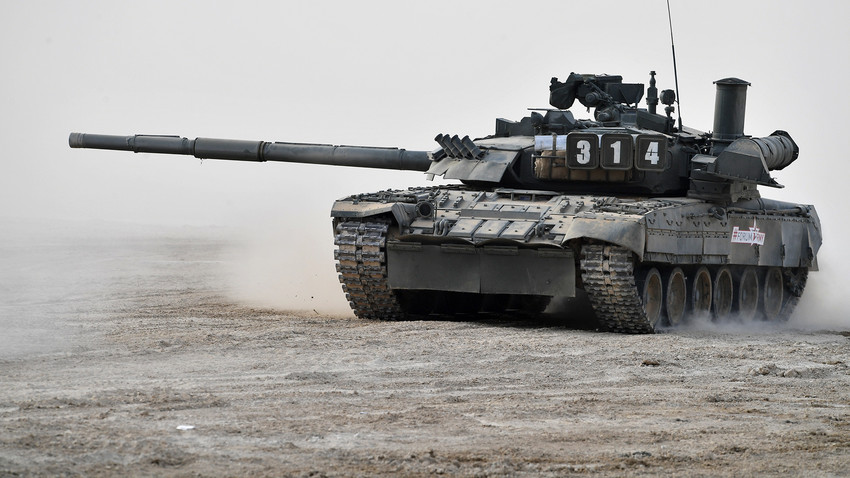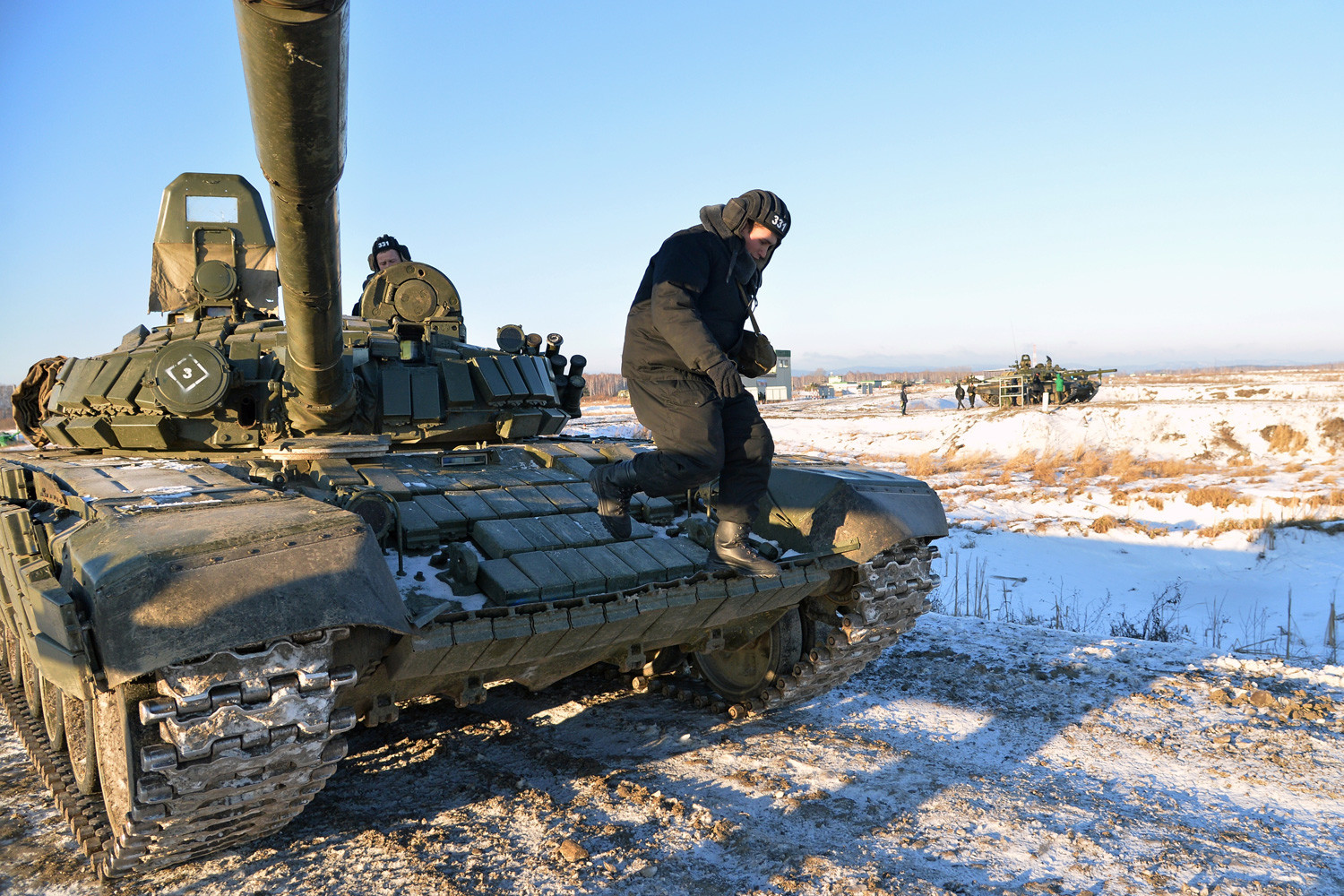
The T-80 tank is seen here during a show of modern and prospective weaponry at the Army 2017 International Military-Technical Forum, Moscow Region.
Mikhail Voskresenskiy/SputnikUralvagonzavod (Russia's monopoly tank maker) has been working on the modernization of the T-80 tanks for the last six months.
On March 15 the ministry took delivery of models of the T-80 ready for service in the coldest regions of the country in the Far North.
Tank troops form the basis of the Russian army; the country currently has around 18,200 tanks of different types.
Designers have managed to deal with the key shortcoming of the T-80 tank - its voracious appetite for fuel.

The T-80 tank at the Chebarkul shooting range outside Chelyabinsk during a demonstration session of the newly formed 90th Vitebsk-Novgorod two-times Red Banner guards tank division.
Aleksandr Kondratuk/SputnikThe tank's gun has been given modern thermal imaging and laser systems that increase its combat effectiveness at any time of day or night. The machine's armor has also been covered with dynamic protection layers, and the crew compartment has been adapted to temperatures down to -40 Centigrade (-43.6 Fahrenheit). The 125 mm gun itself is unchanged, as are the large-caliber machine-guns fitted to the turret.
The T-80 was launched in the mid-1970s and was the first tank in the world to be fitted with a gas turbine engine instead of a standard diesel unit - an engine similar to those used in aircraft. Because of it, the sound of a T-80 racing around a military test ground is like the roar of a fighter plane accelerating on a runway.
The armored giant with its gas turbine engine had many advantages over its contemporary cousins. In contrast to diesel, it was ready for operation three minutes after start-up and not 30 minutes as in the case of the T-72.
The T-80 has a range of 270 miles on a single fuelling. Furthermore, the new engine gave the
During the "Cold War" and arms race, a high-speed tank of this kind was regarded as a first-strike weapon - all 4,000 T-80s were deployed on the Soviet Union's western borders in East Germany and Eastern Europe. In the event of war, they were to cross Europe and reach the English Channel in the course of a few days.
And since the voracious steel giants could be "fed" on any type of fuel, it was planned to deal with fuel shortages "as they went along" - by resupplying them from European petrol stations, industrial plants
But
If using any of Russia Beyond's content, partly or in full, always provide an active hyperlink to the original material.
Subscribe
to our newsletter!
Get the week's best stories straight to your inbox